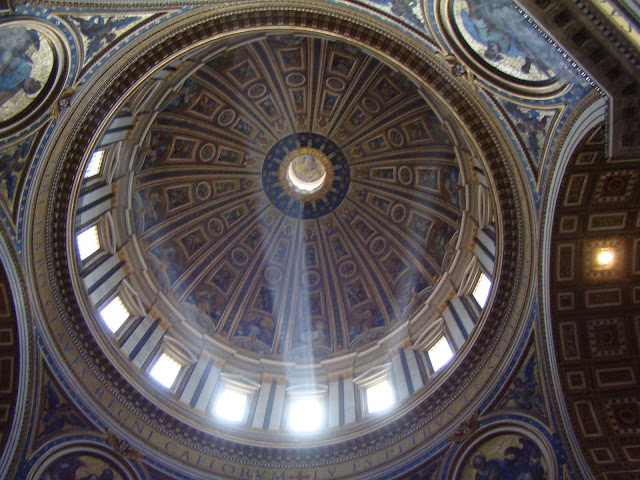The beauty of putting your D-SLR camera into Manual mode is that you can adjust for a certain light, and adjust within a certain light. Again, these adjustments will involve changing your ISO, Shutter Speed, F-Stop, and White Balance like we talked about in the second Photography Lesson.
Adjusting for a certain light is pretty self explanatory and is what I talked about in the second post. This involves changing the Manual Settings until your picture looks lit correctly. Adjusting within a certain light is what I will talk about here and it is what will give your photos a bit more of inartistic flair. Adjusting within light will help you play up shadows, create silhouettes, highlight areas of a photo, and much more. Let's work with a few examples.
Using Low Light To Your Advantage
This photo was taken at my cousin's wedding reception. It was held at night in a large gazebo-like building which was lit by Christmas tree-esque lights. In this type of lighting situation your first instinct may be to use a flash. But you know that I don't like using a flash, and if I had here, I wouldn't have captured the same emotion in the picture. More importantly, I wouldn't have captured the actual moment, I would have captured some bright version of it. So, what I did was dial up the ISO, lower the F Number, slow down the shutter, and turn the WB to indoor light. The result of dialing up the ISO was more "noise" in the photo, but the slight blur from it gives the picture a warm fuzzy feel (Collective "Awww").
Awkward Light Placement
A situation like this can be difficult to photograph. This is a picture of the iconic bagpiper at The Inn At Spanish Bay at Pebble Beach. Our rooms were right on the golf course and every evening the bagpiper (employed by the resorts) walked through the links playing and stopping at various locations. The problem with this lighting is 1) the light from the sunset is low, 2) to get the sunset in the photo the bagpiper had to be photographed on his shadowed side, and 3) if I tried to get the bagpiper well lit using my Manual settings, the sunset would be washed out. The solution was to embrace the idea of the bagpiper in silhouette. I upped the ISO, but not to the very top of the range, and adjusted the shutter and F Stop until the sunset's colors were ideally captured. Then I made sure I had a good angle on the bagpiper (turned to the side and actively playing). The result is a shot that is emblematic of the Inn as well as Pebble Beach Resort.
This shot was taken on the same trip to Pebble Beach. This is Carmel Beach looking North. In this picture, I wanted to capture several things - the sunset, the peninsula, and the dead tree on the beach. I used the same camera method that I did with the bagpiper to get the color of the sunset without blacking out the other details. (Neither of these photos was edited with PhotoShop). You can see that, in terms of light, the sunset is brightest, the peninsula is dark, and tree and grass around it are black. This helps create a lovely layered look and is a result of where I was standing in relation to the light source. Here is another shot of a sunset creating a layered look:
Where Is The Light In Relation To Your Subject?
This picture was taken in the early evening, so the sun was low in the sky (on Arrow's right). The result of this light placement is that half of Arrow is dark and his shadow is long. For this shot I used a faster shutter (because Arrow was running), and I needed to raise the ISO to compensate. Take a look at where the light is coming from when you line up your shot. It's fun to see Arrow partly shadowed, partly sun drenched because you can really get a feel for the type of day it was. Here is a close up shot from the same time that really shows the shadows:
Getting Creative With Lighting
This shot of Baby B was taken on an outdoor deck early in the morning. The result was that there was a huge difference between the areas of sunlight and the shadows rather than a gradual change. What I did was set my camera to work for the lighter area, knowing that the shadows would be pretty dark (darker than they actually were). The light happened to be falling across his face at the time which created a fun, more artistic photo.
Take Advantage Of How Windows Funnel Light
In these photos of St. Peter's Basilica in Rome, a beam of sunlight is streaming in from the famous dome above. I'm sure this was intentional on the part of the architects because it is a church and the whole "light from above" thing is a big deal. I made sure to adjust my settings so the beam was defined instead of just looking like a bright area of light. Just play around with your camera, take a picture, look at it on the screen, then adjust accordingly. (Note: I did not have my D5000 at the time of this trip so the photos are not quite as good quality, but they were best for illustrating my point.)
Dark Situations - Use Any And All Light To Your Advantage
This picture of the Washington Monument, reflecting pool, and Lincoln Memorial was taken from the steps of the Lincoln Memorial at about 7pm. This was admittedly a difficult lighting situation for me. I was able to dial up the ISO, slow down the shutter, and open up the lens (F Number) to allow as much light to enter the camera as possible. I also took advantage of the reflecting pool because it nearly doubled the light. (Note: I am going to do a future post on how to use reflective surfaces.)
Aiming Your Camera Directly At The Sun
It isn't easy to take a photo with the sun directly in front of you because it can leave everything washed out. Also, if you are focusing on something in the foreground the subject will be in front of the sun and therefore in shadow. What I did to capture this was to use a low ISO number, fast shutter, and a mid range F Number. The result is that objects in the foreground look darker than they actually were, but since they were not my subject I was okay with that. The good thing about these settings is that the sun looks defined rather than just washing everything out. (Safety Tip: Looking through the viewfinder is my preferred photography method, but probably isn't the best idea for this type of situation. The probability of going blind goes down when you choose to look at the screen instead. I'm so stuck in my ways though, that I looked through the viewfinder and saw spots for a while. I was worried I would have to learn Braille. I'm thinking of doing a PSA about it. Oh well, I guess hindsight is 20/20. Pun intended.)
Now you know a little more about how to use the light in your environment to give your photos more personality. You can even take the same shot twice, but adjust your settings in between to get vastly different, and equally good, photos. Again, the best way to figure out lighting is by playing with your camera. Keep adjusting the settings between shots. I think you will enjoy getting to know your camera this way.
Next up - Taking advantage of little moments and not over-planning.

















 meghaninwonderland@gmail.com
meghaninwonderland@gmail.com

2 comments to blog for:
I got to go "Awwww" even before you instructed me to! Love that you're around to capture great moments in my life.
You always share some of the best lessons! Thanks for giving us all the opportunity to be your students. Please...tell us MORE!
Post a Comment